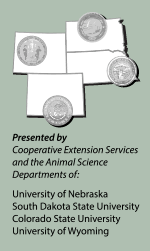Global Market Landscape
Cattle-Fax analyst provides market overview and trends to watch in coming years.
LOVELAND, Colo. (Nov. 19, 2015) — “The global potential for U.S. beef is very good,” said Cattle-Fax general manager Duane Lenz as the final speaker Nov. 19 at the 24th semi-annual Range Beef Cow Syposium (RBCS) in Loveland, Colo. Lenz provided an overview of the international aspects of the beef industry and what trends can be anticipated during the next few years.
Regarding U.S. beef exports, Lenz explained that levels have increased to 2.5 billion pounds (lb.). While this is comparable to export levels that existed prior to the American BSE incident in 2003, for 2015 the export pace has slowed and will likely be down 10%-12% from the previous year.
Lenz attributed the lower exports in the near term to two factors — an increase in the U.S. Dollar Index and slowing economies around the world. He pointed out that particularly China is experiencing a recession.
For the long-term export outlook, Lenz is bullish. He notes that the global middle class is beginning a major wave of growth and is projected to expand from 2 billion people in 2012 to 4.9 billion by 2030. Lenz emphasized that as the middle class grows, they have more income to spend on protein, including beef.
Lenz explained that export values have helped bolster U.S. cattle prices during the last 20 years, and if export growth and demand continue, by 2020 export and offal values could be worth $500 head.
As global economies improve and the middle-class population expands, Lenz says exports will grow again. He concluded, “Global opportunities [for beef] are great. We are talking billions, not millions.”
Here in the United States, Lenz noted that the cow herd has entered an expansion phase that will increase beef supplies during the next two to three years. He says Brazil and India are the only other countries actively expanding beef production.
Regarding cattle prices, Lenz acknowledged 2016 will likely see a “significant” drop in prices. He reports Cattle-Fax anticipates prices $4-$5 lower per hundredweight.
“We’re not going back to 2008-2009 prices on calves,” he said, “but producers will have to settle for less.”
For 2015, Lenz acknowledged that U.S. beef imports have increased and will likely end up 25% higher than the previous year. But he explained this trend is an anomaly for the year because Australia has been in a drought and had more beef going to market. As their moisture improves and cattle are retained, he says imports will taper off.
Editor’s Note: This summary was written under contract or by staff of the Angus Journal®, which retains the copyright. To request to reprint this article, contact Shauna Rose Hermel, editor, at 816-383-5270. PowerPoints are posted with permission of the presenter and may not be reproduced in whole or in part without the express permission of the presenter. Angus Journal claims copyright to this web site as presented. We welcome educational venues and cattlemen to link to this site as a service to their audience.
The Angus Journal's coverage of the event is made possible through collaboration with the event committee and sponsorship of LiveAuctions.tv. For questions about this site, or to notify us of broken links, click here. Look for additional coverage in the Angus Journal, the Angus Beef Bulletin, the Angus Journal Daily, the Angus Beef Bulletin EXTRA and Angus TV.


